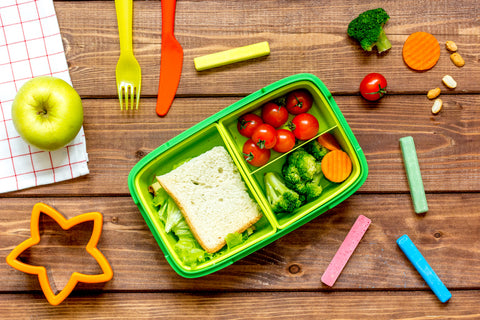
Talking to your kids about nutrition can seem like a daunting task. However, in my experience teaching family cooking classes I’ve found that there’s really not a big difference in the way kids connect and relate to food. I think it’s important to start the conversation surrounding foods that promote health early, without being totalitarian about it. Sometimes putting foods off-limits can lead to rebellion down the line and has the potential to create unhealthy issues around food as they age. What it comes down to is making the conversations as fun, delicious, and hands on as possible!
Working in my practice I’ve found that one of the best ways to talk to kids (I’ve worked with ages 4 to 13) is to actually invite them into the kitchen with you so you can talk about food while being engaged in the process of creating something delicious.
New Foods Can Be Fun
Try introducing them to a new ingredient every week. If they’ve never heard of it you can explain why you’re including this particular item in your meal.
For example, if you’re using avocadoes in some delicious Chocolate Avocado Fudge Cookies (http://caitliniles.ca/chewy-vegan-double-chocolate-cookie-recipe/) you can tell them that adding this ingredient is a great way to not only make the cookie super fudgey but to also add healthy fats and some B vitamins. You can then dig a little deeper by asking if they know what you mean by healthy fat and why they need it to grow. In this case, healthy fats will help their brains develop and make their skin soft. You can do the same with the B vitamins, explaining how they help digest all the yummy food they eat so it can be turned into the energy they need to run and play outside with their friends.
Let Them Be The Cook
Then let them get involved by measuring out the ingredient and blending it into whatever you’re making. Maybe you can give them a taste of the raw ingredient if they’re adventurous. I had one little girl who would literally try everything we cooked and LOVED the taste of straight apple cider vinegar.
A lot of times people think that just because kids are younger that they can’t understand difficult concepts. In my experience I’ve found that the more information you share with them, the more eager they are to actually try foods that may seem “grown-up” like cauliflower or avocados. If you start the conversation around food early and make it fun and delicious then you can set your kids up to have a healthy relationship with food for the rest of their lives.
Give Your Kids The Choice
Another great idea is to let kids be the guide of their own hunger so that their natural hunger signals don’t get turned off or overrun. And please don’t use food as punishment or reward. From my experience working with clients, I’ve found that when someone is punished for not eating a specific food it can create a negative association and they will be less likely to experiment with it willingly moving forward.
Prepare healthy foods in delicious ways and usually kids will give them at least a chance, especially if you give them a choice between two healthy options. And be patient. It can take upwards of 15-20 neutral (no pressure and just including the food matter-of-factly in the meal) exposures to a specific food for your kiddos to acquire a taste for that item.
Be Inquisitive
If your child doesn’t like a specific food try asking them exactly what it is they don’t enjoy. If it’s a texture thing no amount of force or anger is going to get them to eat it. Speaking as someone who grew up with textural issues around foods the feeling of certain foods squeaking on my teeth made me gag and there was not much that could have been done to change that.
You can learn about foods with similar health benefits and different textures to experiment with together. Or you may have to find a different way to prepare it such as pureeing more offensive ingredients into soups or sauces or adding different herbs, spices, or flavours to the meal to suit your child’s palate.
On the flip side, using sweets as a reward for good behaviour sets up the dichotomy that sweet treats are “good” and healthy foods are “bad.” Instead of food try using something else such as screen time, getting to pick the family movie, some money towards a special toy they’re saving for, or whatever else you think would work with your little one.
Have Fun!
Ultimately, teaching kids about nutrition doesn’t have to be as complicated as you think. A good focus is to teach your child that healthy food is good choice because it allows them to grow big and strong, play with their friends, and feel their very best. Keeping the moral judgments and positive/negative reinforcements out of the kitchen can help them develop their own healthy association with the foods that make them feel great. Have fun and let them learn and explore at their own pace to create happy memories together in the kitchen!


